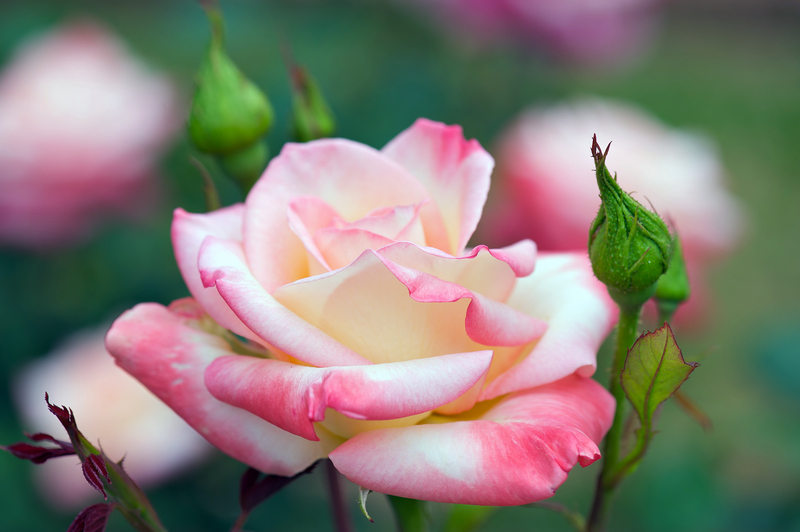Vertical Gardening: A Space-Saving Wonder
Posted on 22/08/2025
Vertical Gardening: A Space-Saving Wonder
Are you looking for an innovative way to add more greenery to your home or garden, even if space is limited? Vertical gardening offers a powerful solution! Discover why vertical gardens have become so popular among urban dwellers and plant enthusiasts, and learn how you can create your own vertical oasis. This comprehensive guide will cover everything you need to know about vertical gardens and their numerous benefits.

What is Vertical Gardening?
Vertical gardening refers to the practice of growing plants upward on a support structure or wall, rather than in traditional flat beds. This technique maximizes limited space, making it ideal for urban environments, small yards, balconies, patios, or even indoors. Gardeners utilize trellises, containers, stacked planters, living walls, and customized vertical frameworks to bring greenery to unlikely locations.
Different Types of Vertical Gardens
- Living Walls: Also known as green walls, these are panels of plants grown vertically using hydroponics or soil. They are often mounted on indoor or outdoor walls.
- Trellised Climbing Gardens: Support structures such as trellises or fences are used to allow climbing plants like beans or ivy to grow vertically.
- Vertical Planters and Towers: Stackable pots or towers allow for multiple layers of plants, perfect for herbs and leafy greens.
- Pocket Planters: Fabric or plastic pockets attached to walls hold soil and individual plants, making them great for small herbs or flowers.
- Pallet Gardens: Recycled wooden pallets transform into stylish, space-saving plant holders.
The Benefits of Vertical Gardening
- Maximum Space Utilization: Vertical gardens allow you to grow more plants using less horizontal space, making them ideal for apartments and compact yards.
- Improved Air Quality: Plants in vertical arrangements help filter toxins, producing cleaner air indoors and outdoors.
- Enhanced Aesthetics: Living walls and vertical structures offer visually stunning, lush green focal points for any area.
- Better Plant Health: Growing plants off the ground can reduce pest problems and diseases found in regular gardening.
- Insulation and Cooling: Vertical gardens can insulate buildings, keeping interiors cooler and reducing energy costs.
- Accessibility and Ergonomics: Gardening at eye-level or higher can be less strenuous, making it accessible for people with mobility challenges.
- Urban Biodiversity: Vertical gardens attract pollinators and provide habitats, promoting greater urban ecological diversity.
How to Get Started with Vertical Gardening
Starting your vertical gardening journey is easier than ever. Begin by assessing your available space, sunlight, and plant preferences. Here are some essential steps:
1. Assess Your Space
- Determine where you want your vertical garden: indoors, balcony, fence, or exterior wall.
- Measure the area to understand your size limits.
- Consider proximity to water sources and sunlight exposure.
2. Select the Right Structure
- Trellises: Ideal for climbing vegetables and flowers.
- Wall-mounted planters: Best for herbs and compact plants.
- Freestanding towers: Great for small spaces or flexibility.
- Pallet or pocket gardens: Cost-effective and DIY-friendly.
3. Choose Suitable Plants for Vertical Gardens
Selecting the right plants ensures healthy growth and a thriving garden. Consider these popular choices for vertical plant walls and planters:
- Herbs: Basil, mint, parsley, oregano, thyme.
- Leafy Greens: Lettuce, spinach, kale, Swiss chard.
- Flowers: Petunias, pansies, ferns, succulents.
- Climbing Plants: Tomatoes, beans, peas, cucumbers, morning glories, ivy.
- Strawberries: Perfect for cascading planters or towers.
4. Soil, Water & Fertilizer Requirements
- Soil: Use high-quality, lightweight potting mix that retains moisture but drains well.
- Water: Vertical planters tend to dry out faster; use drip irrigation or self-watering containers for convenience.
- Fertilizer: Feed plants with balanced liquid fertilizer every few weeks for optimal growth.
Best Practices for Vertical Garden Success
Proper Installation
- Ensure structures are sturdy, especially if attaching to a wall. Heavy soil and plants require secure mounting.
- Line indoor living walls with waterproof barriers to avoid water damage.
- Consider weight-bearing capabilities for balconies or fences before installation.
Regular Maintenance
- Prune regularly to encourage growth and prevent overcrowding.
- Check soil moisture levels daily, especially in hot weather or for indoor vertical gardens.
- Monitor for pests and diseases, addressing them promptly.
- Replace annuals and replenish soil as needed to keep your garden thriving.
Seasonal Adaptations
- Indoor gardens: Use grow lights in winter if natural light is insufficient.
- Outdoor vertical gardens: Protect tender plants from frost or extreme heat using covers or shades.
- Rotate crops and plant varieties to maintain soil health and interest throughout the year.
Creative Ideas for Vertical Gardening
Vertical gardens are highly customizable, limited only by your imagination! Here are some creative vertical garden ideas:
- Mason Jar Herb Garden: Attach jars to a wooden board or metal grid for compact kitchen-friendly herbs.
- Pocket Shoe Organizer Garden: Repurpose a fabric shoe organizer into a vertical planter for small flowers and herbs.
- Pallet Wall Garden: Stand a pallet upright, fill it with soil and plants, and enjoy a rustic green screen.
- Hanging Gutter Planters: Mount sections of rain gutter in tiers, perfect for trailing flowers and edible greens.
- Indoor Moss Art: Create living wall art pieces by arranging moss and small ferns on canvas or frames.
Vertical Gardening for Urban Spaces
City dwellers often struggle with limited gardening space, but vertical gardens offer a groundbreaking solution. High-rise balconies, condo patios, rooftops, and even apartment interiors can bloom with the right vertical system. Not only do vertical gardens maximize available square footage, they also:
- Improve urban air quality by acting as natural air filters.
- Reduce noise pollution through dense vegetation.
- Contribute to cooling and insulation of urban buildings.
Several cities worldwide, such as Singapore and Paris, have adopted vertical gardens in public spaces, transforming drab facades into lush masterpieces and inspiring healthier urban living.
Indoor Vertical Gardening: Bringing Nature Inside
Indoor vertical gardening brings the beauty and benefits of nature into your home or office. A living wall or a tiered herb planter not only purifies the air but also enhances mood, productivity, and well-being. To succeed with indoor vertical plant walls:
- Choose low-light tolerant varieties for areas away from windows (ferns, pothos, philodendron).
- Install efficient watering systems like drip irrigation or self-watering planters to avoid overwatering.
- Use LED grow lights to ensure consistent growth in dim environments.
Environmental & Social Impact of Vertical Gardens
The rise of vertical gardening has contributed positively to both the environment and society. Here's how:
- Reduces "urban heat island" effect: More greenery helps cities stay cooler and reduces energy costs for cooling.
- Encourages Community Interaction: Shared wall gardens or vertical allotments can foster community bonds.
- Biodiversity Boost: Vertical gardens attract birds, bees, and butterflies to urban spaces, supporting local food webs.
Case Study: The Green Wall in Milan, Italy
The Bosco Verticale ("Vertical Forest") in Milan exemplifies the possibilities of vertical gardening on a grand scale. This pair of residential towers supports over 900 trees, 5,000 shrubs, and 11,000 floral plants, functioning as a living ecosystem that produces oxygen, absorbs CO2, and shelters wildlife--all while housing humans in the heart of the city.
Vertical Gardening Mistakes to Avoid
To ensure success with your vertical garden, avoid these common pitfalls:
- Overcrowding plants: Give each plant enough space for healthy roots and growth.
- Poor watering technique: Ensure your irrigation system reaches all levels, especially the top and bottom rows.
- Ignoring plant selection: Choose species suited for vertical environments and your climate conditions.
- Neglecting maintenance: Regularly inspect, prune, and clean your vertical garden to prevent disease and decay.
Future Trends in Vertical Gardening
As populations grow and urbanization continues, vertical gardening is evolving with exciting new technologies and trends:
- Smart irrigation and app-controlled systems: Automate watering and nutrition with high-tech tools.
- Modular garden panels: Easy-to-install systems for home and office users.
- Edible living walls: Growing food vertically supporting urban agriculture and local produce.
- Integration with renewable energy: Combining plant walls with solar panels and rainwater harvesting.

Conclusion: Your Journey to Vertical Gardening Starts Today
Vertical gardening is more than just a space-saving wonder—it is a sustainable, beautiful, and functional method to bring more green into your life. Whether you're starting with a modest herb wall in your kitchen or transforming a blank fence into a lush vertical masterpiece, the possibilities are endless. Create an environment that's productive, visually stunning, and eco-friendly.
Embrace the future of urban gardening and experience the transformation that a vertical garden can offer. With proper planning, the right plants, and consistent care, your vertical sanctuary will thrive for years to come. Happy gardening!
Frequently Asked Questions about Vertical Gardening
Q: Is vertical gardening suitable for beginners?
Absolutely! Many vertical garden systems are DIY-friendly and require minimal gardening experience. Start small, and expand as you learn.
Q: Are vertical gardens expensive to set up?
It depends on your materials and design. DIY vertical gardens using recycled materials can be very affordable, while high-end living wall systems may cost more.
Q: Can I grow food in a vertical garden?
Yes! Many people grow herbs, leafy greens, strawberries, tomatoes, and even beans in vertical gardening systems.
Q: What maintenance do vertical gardens need?
Regular watering, pruning, pest monitoring, and occasional soil replacement will keep your vertical garden healthy.
Q: Where can I buy vertical gardening supplies?
Vertical gardening kits, planters, and accessories are widely available online and at garden centers. You can also repurpose everyday materials for a unique DIY approach.
Start your vertical gardening adventure today, and turn any small space into a breathtaking, productive, and eco-friendly paradise!



